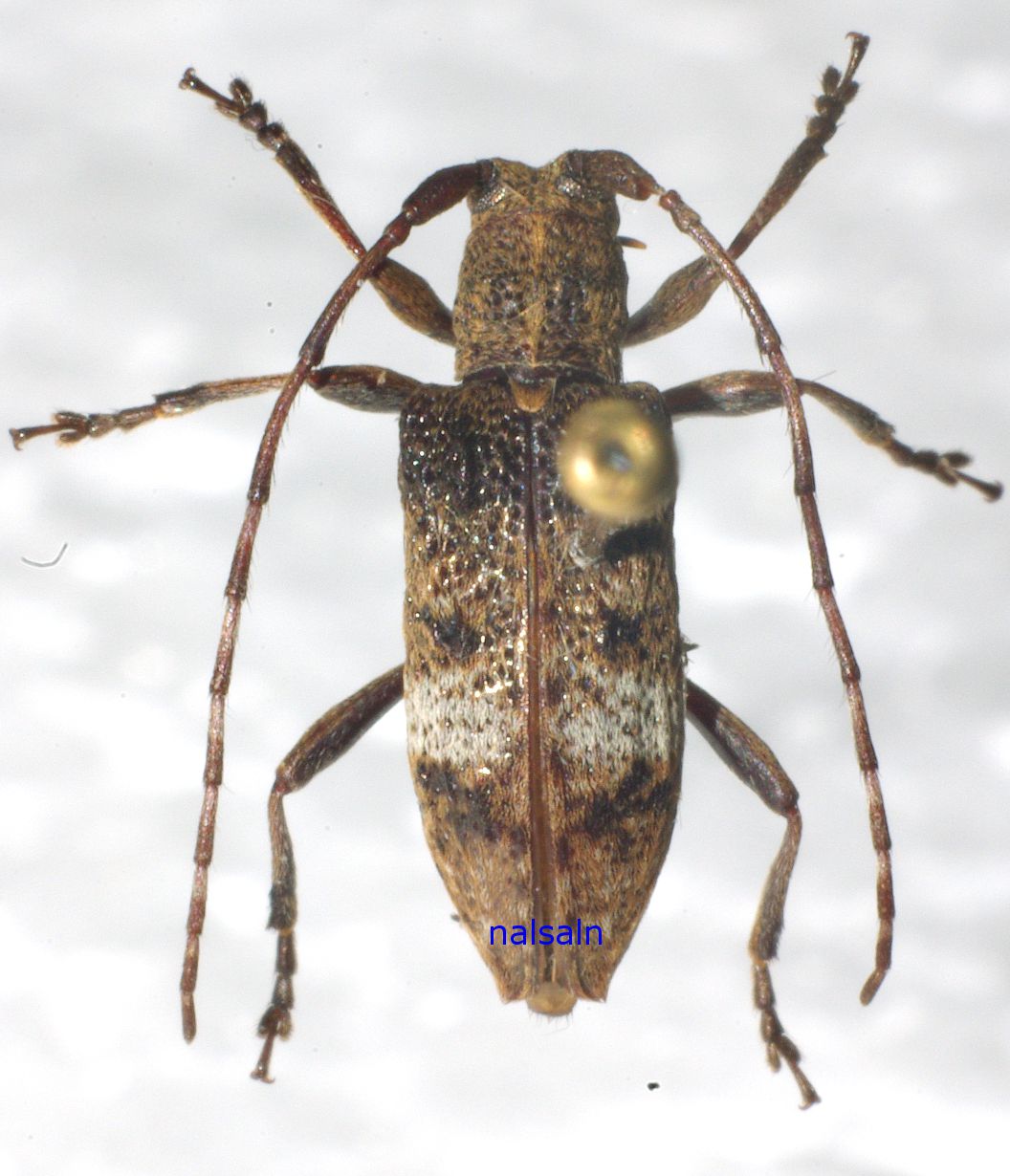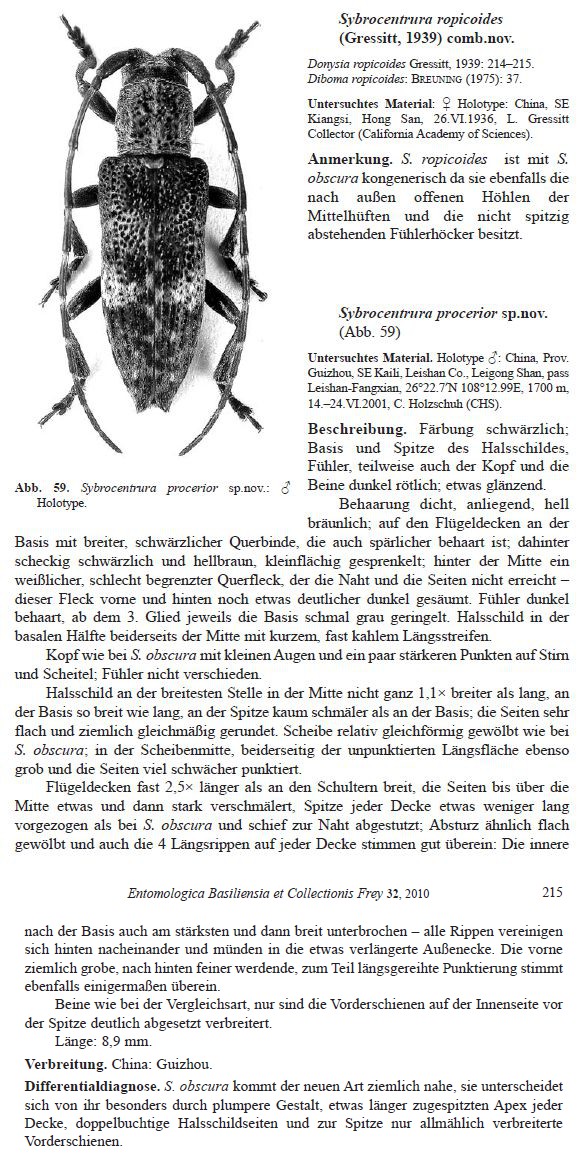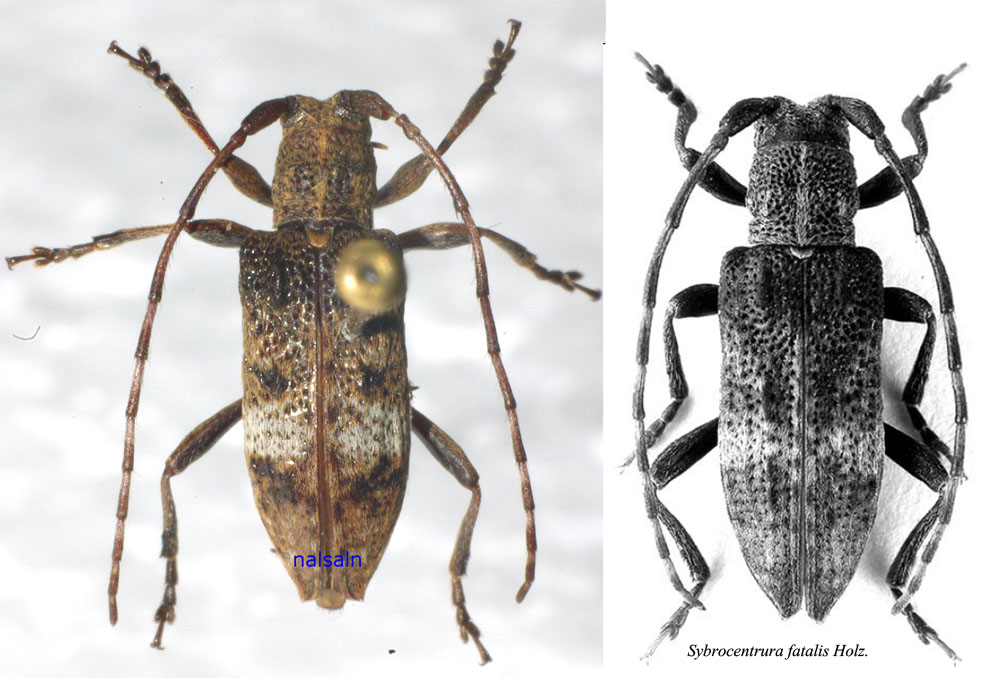| T O P I C R E V I E W |
| nalslan |
Posted - 19/12/2012 : 17:04:22
Hello all, I collected this from almost exactly the same place (26¡ã23.222'N, 108¡ã13.227'E compares to 26¡ã22.7¡äN 108¡ã12.99E) of the holotype of Sybrocentrura procerior Holzschuh, 2010.
I could not reach a decision that they are same because of differences on their scutellum and shape of the white band on elytra (too bad that I can't read German and Google translation is not a very good translator).
What do you think?
Thanks.
Here is mine:

and the holotype:
 |
| 6 L A T E S T R E P L I E S (Newest First) |
| nalslan |
Posted - 03/09/2016 : 11:09:55
quote:
Originally posted by Xavier
...and could it be Sybrocentrura fatalis Holzschuh, 2010 from Shaangxi ?
Xavier, thank you for coming back to this.
I guess you are right, it is or very close. Unfortunately, I could not collect more specimens. |
| Xavier |
Posted - 02/09/2016 : 15:34:11

143.66 KB
...and could it be Sybrocentrura fatalis Holzschuh, 2010 from Shaangxi ? |
| nalslan |
Posted - 24/12/2012 : 15:42:01
Thank you Francesco,
I'll keep trying next year to see if I can catch more individuals, then come back on it.  |
| Francesco |
Posted - 22/12/2012 : 22:04:52
According to the provided differential diagnosis:
S. obscura differs in
the more inflated aspect,
the scarcely more elongated apical teeth,
the twice bulged pronotal sides,
and the regularly enlarged protibiae.
Both last characters correspond to your specimen... climax of characters (hence, procerior = obscura), or hybrid?
By considering that S. procerior has been described on the basis of only one specimen, I would have been more careful... |
| nalslan |
Posted - 20/12/2012 : 07:12:57
Thank you, Francesco.
Sorry, my bad on the incomplete doc. I edited my original post, added the rest of the description. Please take a look.
Thanks |
| Francesco |
Posted - 19/12/2012 : 22:39:57
According to the provided paper, S. procerior has the elytral apex "a bit less prolonged than S. obscura" has.
Hence, your specimen can not be S. obscura.
The last alternative may be S. ropicoides, but I have got a partial description of this species.
Note: Löbl & Smetana erroneously considered this genus as a synonym of Zotalemimon Pic, 1925 and obscura = ropicoides, but they are only some of the countless mistakes of this unlucky catalogue...
|
|
|


